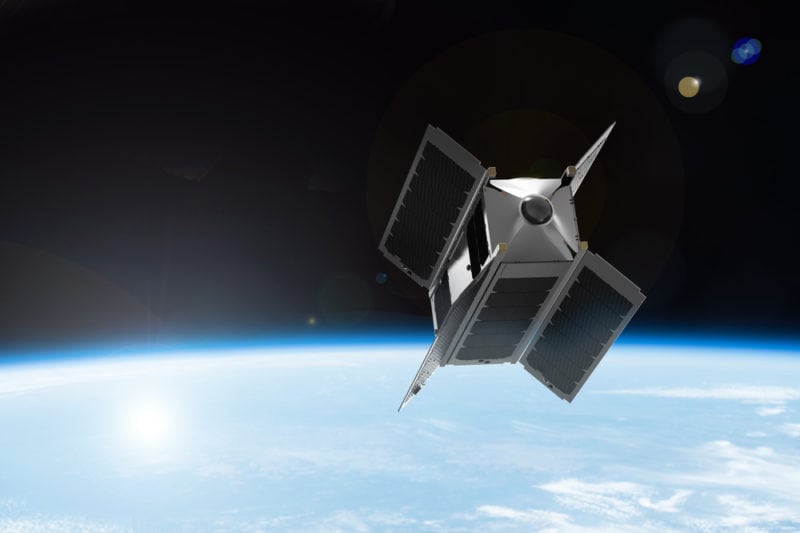Latest News
[Via Satellite 08-19-2016] SpaceVR, a semi-crowdfunded company that aims to be the first to launch a Virtual Reality (VR) camera satellite into orbit, has taken its first definite step toward launch by signing a contract with NanoRacks to deploy its VR satellite, Overview 1, from the International Space Station (ISS). Overview 1 is slated to reach the ISS as part of SpaceX’s CRS-12 mission, following which the NanoRacks CubeSat Deployer (NRCSD) will deploy the satellite into Low Earth Orbit (LEO) in 2017.
SpaceVR aims to give subscribers the opportunity to experience the universe through virtual reality. Its debut satellite will use 4K sensors to capture high-resolution, fully immersive, 360-degree video of Earth, and the content will be viewable on any virtual reality device, including smartphones, Oculus Rift, and extreme resolution devices such as the StarVR.
The NanoRacks launch is just the beginning of SpaceVRs mission, however, and the company is hoping to launch satellites to the Moon, Mars, asteroids and other planets.
“Our plan is to launch new satellites every nine months and take advantage of all the camera tech that continues to improve,” Blaze Sanders, CTO of SpaceVR told Via Satellite. “In March 2018 there will be six [satellites flying] and nine months after that, in the beginning of 2019, there will be hundreds flying — depending on funding of course, but that is the plan.”
The Overview 1 VR satellite is a 3U+ CubeSat, measuring 34x10x10 cm — roughly the size of a loaf of bread — that weighs 3.9 kilograms. The satellite took 20 weeks to design and will take 28 weeks to build. And, while the mission appears to be on track for launch, the company has faced some obstacles.
“We did experience challenges around developing new hardware for an advanced space-rated camera system. We have eight 4K sensors that capture up to 30 [Frames Per Second] FPS. We are flying one of the most advanced computers, TK1, in order to control all those high-resolution cameras,” said Sanders.
| Interested in reading more stories like this? Sign up to our satellite news feed to get the latest satellite industry news right to your inbox! |
Already, SpaceVR boasts 1,300 subscribers for its virtual reality content, most of which signed up in conjunction with the company’s Kickstarter crowdfunding campaign, which raised $135,000 in investment in exchange for a discounted subscription to unlimited content. SpaceVR has also raised an additional $1.25 million in Chinese investment primarily from the Shanda Group and Skywood Capital with the aim to launch further virtual reality satellites.
“We are going to give all 7 billion people the Overview Effect, starting in China and the U.S., with Overview 1,” said Sanders, describing the phenomenon some spacefarers have reported where upon seeing the Earth they are met with a sense of awe. The Overview Effect is often associated with engendering a feeling of responsibility for the wellbeing of the planet. “Overview 2 will be a 6U satellite that will enable even more people to access the view over Earth,” said Sanders.
The company is in talks with Google’s Lunar XPrize, a program that aims to incentivize space entrepreneurs to create a new era of affordable access to the Moon, as to how SpaceVR can put a spacecraft into lunar orbit. According to Sanders, working with the team to put a satellite into lunar orbit would require a financial investment from SpaceVR of about $3 million.“That would be our next step, starting in low lunar orbit, somewhere that is a little bit easier to get to, but still amazing, ever-changing content. We are looking to launch that in 2018,” said Sanders.
To get here, SpaceVR also welcomed investment and expertise from NanoRacks, who took an early equity position in the company. “For our services we took a combination of payment and some equity. The reason for it is that it makes us smarter. It allows us to be a long-term partner with a company that we think is very exciting and has a lot of potential,” NanoRacks CEO Jeffrey Manber told Via Satellite. “We won’t do this often, but we will occasionally when we believe in the customer and they are offering the right mix of payment and equity for our services. But we also want to be part of this new generation of entertainment and consumerism.”
And SpaceVR sees a huge benefit from the partnership as well.
“We also benefit from the ease of being able to launch a CubeSat from the ISS. That is the only way we can ever get to market and prove the technology that we have,” said Sanders.
Get the latest Via Satellite news!
Subscribe Now